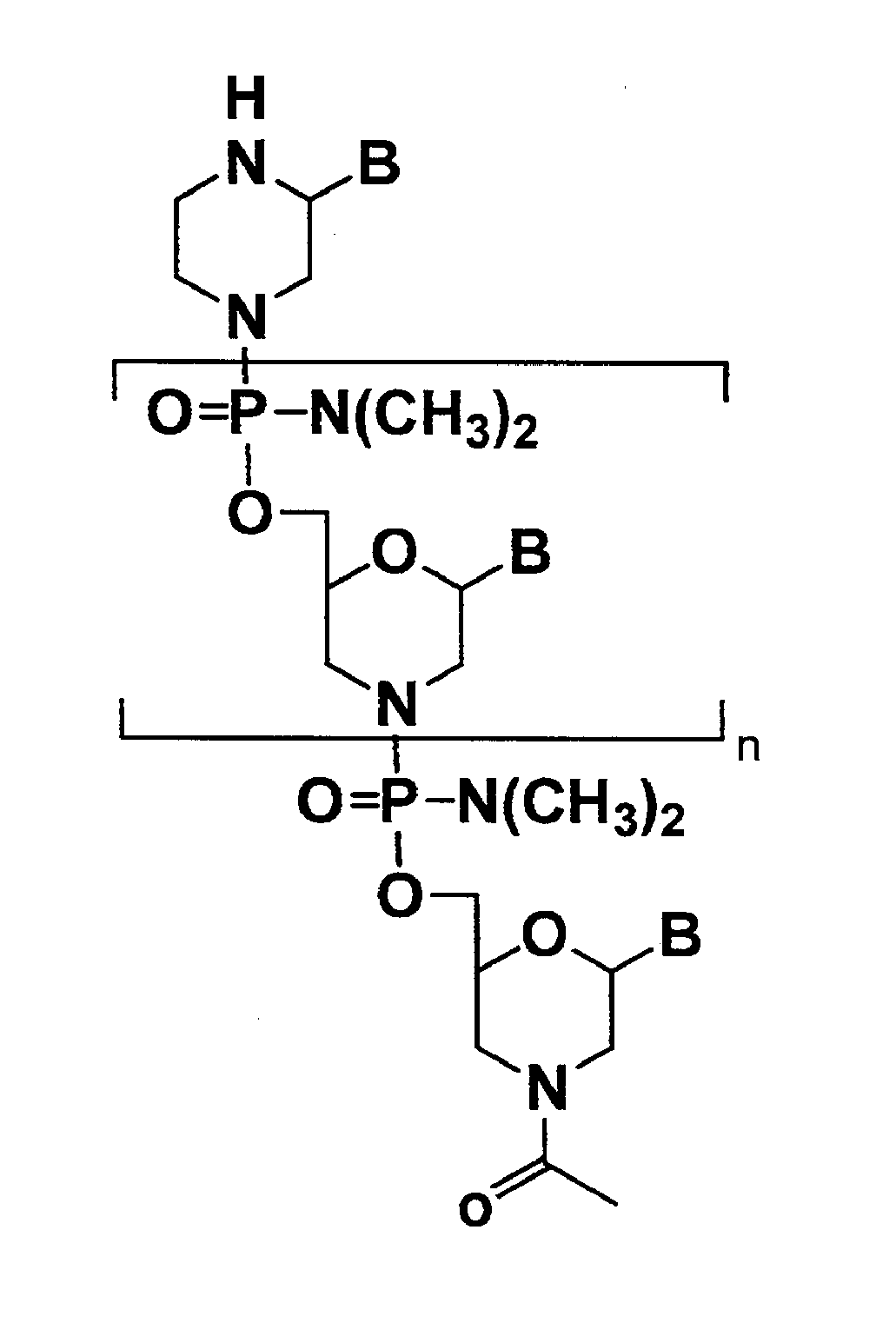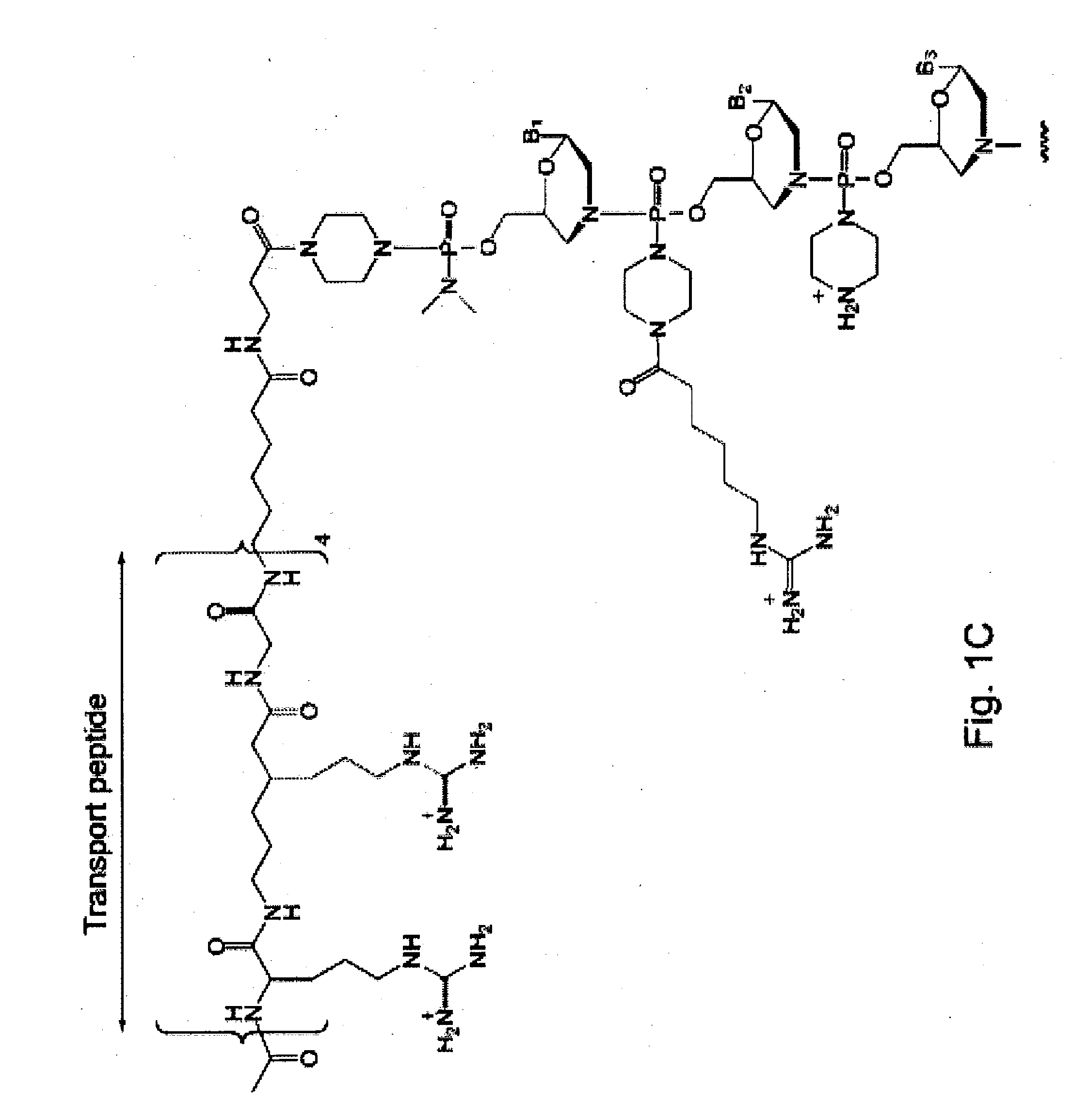Antisense antibacterial compounds and methods
a technology of antibacterial compounds and compounds, applied in the field of antibacterial compounds, can solve the problems of inability to find new types of antibiotics, mortality of persons infected with hiv, and mtb infection remains one of the most serious threats to the health of the world, and achieves the effect of rapid response and rapid design and testing
- Summary
- Abstract
- Description
- Claims
- Application Information
AI Technical Summary
Benefits of technology
Problems solved by technology
Method used
Image
Examples
example 1
Evaluation of PMO Compounds in Macrophage Cultures Infected with M. tuberculosis
[0122]This example describes the evaluation of the compounds listed in Table 1 in macrophage cultures infected with laboratory strains of M tuberculosis. Cultures are infected then treated with the test comopunds at concentrations ranging from 0.01 to 10.0 uM. The test compounds are added to the growth medium from a stock solution (1 mM) and remain in the cultures during the duration of the evaluation period. Given the relatively slow growth rate of M tuberculosis, longer incubations can require multiple additions of the oligomers. The operating protocols are adjusted based on preliminary observations. The critical endpoints of the studies include macrophage survival and reduction in the growth of M. tuberculosis. A satisfactory magnitude of response is determined based on initial observations.
example 2
Evaluation of Effective Compounds from Example 1 in a Mouse Model of TB
[0123]Lead candidates from the cell culture screen from Example 1 are evaluated in a mouse model with the laboratory strains of M. tuberculosis. The mice are infected then treated with the lead test compound. The dose range is from 30 ug / mouse to 300 ug / mouse (based on prior experience with PPMO efficacy and toxicity). The route of administration may include intraperitoneal, intravenous and insufflation. The dose interval is from +0.5 to 2 hours post-infection and at 12 hour intervals for up to two weeks. Initial studies will utilize fewer mice per group (e.g., 3-4) but confirmatory studies will require larger numbers of mice per group (e.g., 8-12). The critical endpoints of the studies will include survival, changes in body weight and reduction in the growth of M tuberculosis.
example 3
Explore Host-directed Agents in a Mouse Model of TB Infection
[0124]The utility of host directed agents are not easily observed in cell culture due to the lack of complex cell-to-cell communication and an appropriate cellular environmental context. Hence, these studies are conducted in a mouse model infected with the laboratory strain of M tuberculosis. The compounds tested are listed in Table 3. The mice are infected then treated with the lead compounds. The dose range is from 30 microgram to 300 microgram per mouse. The route of administration include intraperitoneal, intravenous and insufflation. The dose interval is from +0.5 to 2 hours post-infection and at 12 hour intervals for up to two weeks. Initial studies utilize fewer mice per group (e.g., 3-4) and confirmatory studies require larger numbers of mice per group (e.g., 8-12). The critical endpoints of the studies include survival, changes in body weight and reduction in the growth of M tuberculosis as measured by serum colon...
PUM
| Property | Measurement | Unit |
|---|---|---|
| Tm | aaaaa | aaaaa |
| Tm | aaaaa | aaaaa |
| Tm | aaaaa | aaaaa |
Abstract
Description
Claims
Application Information
 Login to View More
Login to View More - R&D
- Intellectual Property
- Life Sciences
- Materials
- Tech Scout
- Unparalleled Data Quality
- Higher Quality Content
- 60% Fewer Hallucinations
Browse by: Latest US Patents, China's latest patents, Technical Efficacy Thesaurus, Application Domain, Technology Topic, Popular Technical Reports.
© 2025 PatSnap. All rights reserved.Legal|Privacy policy|Modern Slavery Act Transparency Statement|Sitemap|About US| Contact US: help@patsnap.com



